

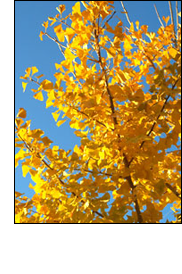
OUR PREHISTORIC ORNAMENTAL
The Ginkgo Tree: Our Prehistoric Ornamental

This species of tree witnessed the rule of the dinosaur and has been manipulated by the hand of man for hundreds of years. According to Mississippi State Horticulturist Norman Winter, the ginkgo, although an import from the Far East, is native to North America as shown in the fossil record.
Photographed at right by D. Lloyd from the Jurassic Cloughton Formation found in Scarborough, Yorkshire, England are fossil leaves from a Ginkgo more than 150 million years old, showing multiple leaves in a matrix measuring 4 x 2.75 inches (10 x 7 cm).
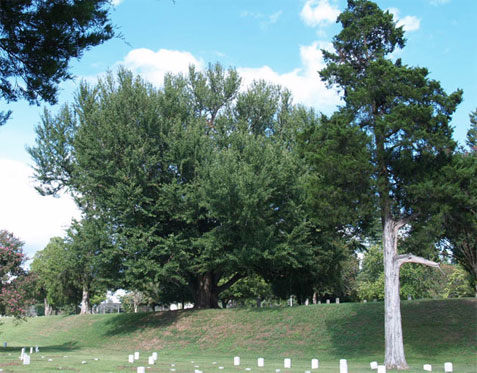
The Ginkgo Tree, also known as Maidenhair is, according to Wikapedia, without living relatives, and is “one of the best known examples of a living fossil.” 270,000,000 years old fossils have been discovered that are related to the present-day ginkgo. It is thought that the ginkgo almost completely vanished from the Northern Hemisphere toward the end of the Pliocene Era, and survived almost totally in the Southern Hemisphere.
This Ginkgo tree (left) found in the Vicksburg National Cemetary in the Vicksburg National Military Park is an impressive example of the species. In the fall, it becomes a glorious blaze of yellow as seen in this photo (below) taken in 1986 by Dorothy Root.
Ginkgos exist in Mississippi today, although they are more closely associated with China and Japan. The symbol of The University of Tokyo displays two ginkgo leaves, and outside of some Buddhist temples stand ginkgos 1,500 years old. The first Westerner to see the ginkgo in 1690, Engelbert Kaempfer, wrote the name as “ginkyo,” but his “y” was mistaken for a “g,” and the misspelling became standard.
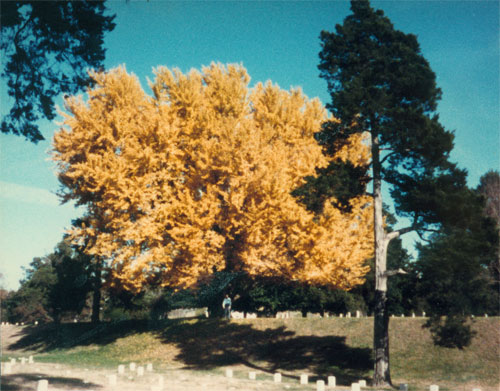
The Ginkgo is an unusual looking tree. The veins of its leaves radiate out from that single point where the stem touches the fan-like blade (see below). The ginkgo is a deciduous tree, meaning that it loses its leaves in the fall. The leaves drop almost overnight, just after the tree turns a full, rich yellow. During the summer, the foliage is a beautiful deep green. The ginkgo is a hardy tree, resisting disease and insects, and thriving well in urban settings.
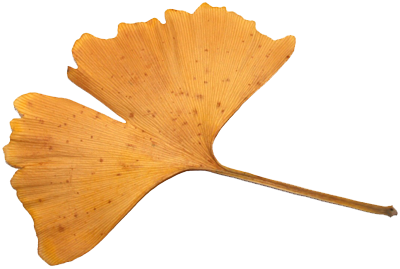
The Ginkgo is able to live an extremely long time. There are specimens of the ginkgo that are as old as 2,500 years, and one in China reported to be 3,000 years old. This particular ginkgo tree was in existence 1,000 years before Christ walked the Earth.
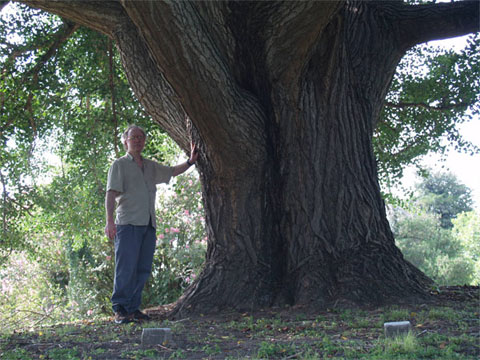

This massive trunk (above left) bears testimony to the great age of the Ginkgo shown at the top of this page. It is quite possibe that this Ginkgo witnessed the fighting in Vicksburg during the Civil War. A group of Ginkgo grown as penjing, or Chinese tray scenery, at the Montreal botanical gardens stands approximately 18 inches tall (above right, photographed by Aarchiba).
One of Mississippi’s most striking specimens of the ginkgo, featured on this page, can be found in the Vicksburg National Cemetery in the Vicksburg National Military Park. In the fall, this huge tree turns a brilliant yellow. It is a stunning sight in contrast to the stark headstones on this green, hilly field. This tree was most certainly witness to the Civil War as it played out in Vicksburg. It stands tall where the fallen were buried, and will most likely outlive all of us. It is an awesome and enviable life form — strong, solemn, and steady, with its wild burst of color.

